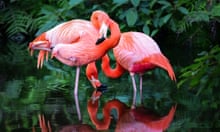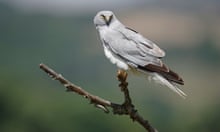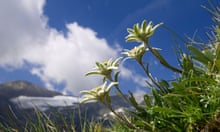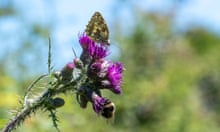The world’s greatest forests could lose more than half of their plant species by the end of the century unless nations ramp up efforts to tackle climate change, according to a new report on the impacts of global warming on biodiversity hotspots.
Mammals, amphibians, reptiles and birds are also likely to disappear on a catastrophic scale in the Amazon and other naturally rich ecosysterms in Africa, Asia, North America and Australia if temperatures rise by more than 1.5C, concludes the study by WWF, the University of East Anglia and the James Cook University.

The research in the journal Climate Change examined the impact of three different levels of warming – 2C (the upper target in the 2015 Paris agreement), 3.2C (the likely rise given existing national commitments) and 4.5C (the forecast outcome if emissions trends remain unchanged) on nearly 80,000 plant and animal species in 35 of the world’s most biodiverse regions.
If governments fail to set more ambitious commitments than those currently on the table, the report projects devastating losses of more than 60% of plant species and almost 50% of animal species in the Amazon at a temperature rise of 3.2C.
If countries lift their efforts sufficiently to reach the 2C goal, the outlook is improved – but still grim – with more than 35% of species at risk of local extinction in the region. If no actions are taken, the picture is apocalyptic, with a likely loss of more than 70% of plant and reptile species and a more than 60% decline of mammal, reptile and bird species in the Amazon.
The picture was similarly alarming in the two other worst affected areas – south-west Australia and the Miombo woodlands in Africa. But nowhere among the selected 35 hotspots escaped massive losses of wildlife, which would have a dire knock-on effect on human society and wellbeing.
The authors considered how warmer weather and wilder rainfall patterns (more droughts and storms) could negatively affect savannas in Africa, jungles in Bangladesh, the Cerrado-Pantanal in Brazil, the Yangtze delta and coastlines in Europe, Madagascar and the Caribbean. It noted how this would create tensions over water between humans and animals, for example African elephants, which drink as much as 250 litres (50 gallons) a day. Sea-level rises would also be devastating for many species, such as tigers in the Sundarbans, which would see 96% of breeding grounds submerged.
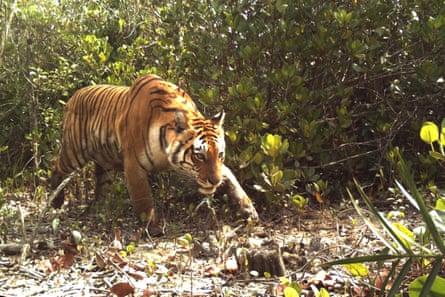
The losses might even be higher because the disappearance of one species - such as a tree - can have a knock-on effect on other ecosystems. Fewer plants can also means less rain, according to other recent studies on the role played by the Amazon. More pressing risks – such as habitat loss from land clearance and pollution – were not accounted for.
William Laurance, director of the Centre for Tropical Environmental and Sustainability Science, said: “For the Amazon and Guianas, the WWF report is scary as hell. The loss of half or more of the region’s stunning plant diversity would be a biological blow of almost unimaginable severity.
“However, such computer models with all their assumptions and complexities are really ‘scientific cartoons’ giving us only a rough sketch of the future. But even if they’re only half right, these are very frightening cartoons indeed.”
The study considered two main ways to reduce these losses: adaptation (helping species to migrate to new territories) and mitigation (cutting greenhouse gases more aggressively). The former produced modest improvements thanks to the creation of eco-corridors between protected areas, but this was little help to slow-moving or almost stationary groups, such as orchids, plants, amphibians and reptiles. WWF said there may be a need to translocate such species, which would otherwise be outrun by the pace of climate change.
A partial solution may be relocation. Some animals, such as wolves, have been successfully reintroduced to their former ranges. A paper published today by the Royal identified 130 areas across the globe that might be suitable for carnivore reintroduction and concluded that rewilding will be essential for conservation in the future.
Far better, the authors say, is to reduce greenhouse gas emissions to keep warming as close to 1.5C as possible.
“The numbers are a bit of a wake-up call,” said Stephen Cornelius, chief adviser to WWF on climate issues. “If there is one message it is that mitigation makes a big difference. But even that is not enough for a lot of species ... What will be the new normal in coming decades is not something that wildlife has seen before.”
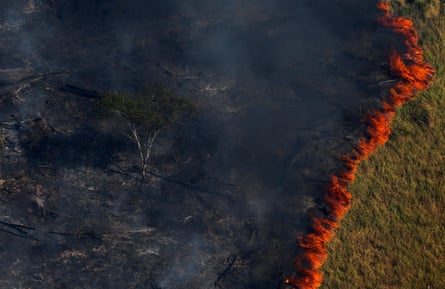
Experts on Amazon wildlife said the findings were alarming, though they noted that such projections are a rough guide to the future.
Last month, a separate study predicted an ecological tipping point if 25% of the Amazon is deforested, which would cause droughts and environmental degradation over a wider area. The authors argue the 2014-15 drought in São Paulo is a precursor to what may come unless deforestation is halted and more trees are planted. While this is contentious and relates to the size of the forest rather than the number of species, it highlights the wider impacts of a diminished Amazon, which would apply to a different extent with the weakening of forests in other countries.
Many species are already at risk from other factors, such as habitat destruction, invasive rivals and disease. Climate change adds to those pressures, prompting fears that a sixth mass extinction is already underway.


